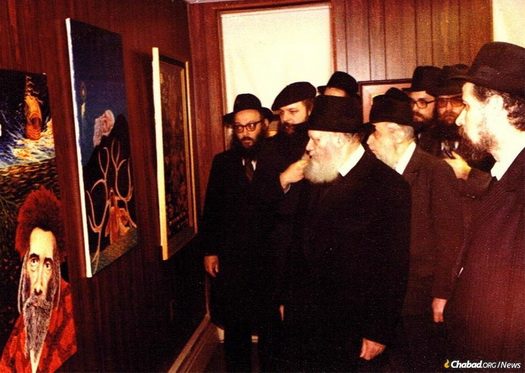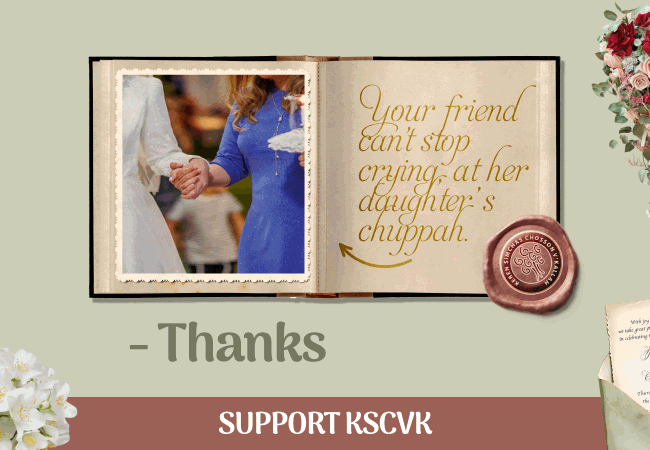
Weekly Story: Thank You For The Good News
Rabbi Sholom DovBer Avtzon
In addition to posting a story, I am also adding an insight that someone sent me about last weeks parable. As I write, I do appreciate your feedback.
At a recent farbrengen I heard the following story:
Reb Dovid Nachshon once farbrenged in 770 and he said: “I was speaking with Rabbi Leibel Groner when one of the students of 770 walked in and gave him a note to bring to the Rebbe.
As he was about to leave Rabbi Groner said to him, “Wait a moment, I have an answer for you from the Rebbe.” That seemed unusual, as the Rebbe had not yet received his note, but on the Rebbe there are no questions. We heard that the Rebbe was able to read the notes when the chossid wrote it.
Rabbi Groner looked through the stack of answers that he had received from the Rebbe, and after a few seconds he found the Rebbe’s response to this student and said, “the Rebbe responded: “Goiram nachas rav – your act gave me tremendous satisfaction.”
“I concluded my conversation and left Rabbi Groner’s office to speak with that student. However, I didn’t see him in the study hall.
“I walked out of 770 and noticed him on Kingston Avenue. I chased after him and when I caught up to him, I asked, “What did you do that gave the Rebbe tremendous satisfaction?”
The student just shrugged his shoulders as if to say “what’s the difference. It is between me and the Rebbe.”
I understood that he is humble, so I replied “if whatever you did gave the Rebbe tremendous satisfaction I would like to also do it and give him that level of satisfaction.”
That was a clincher, and the young man responded, that around two weeks ago the Rebbe edited a maamar that he had said and it was published. In addition to learning it as every student in the yeshiva did, I reviewed it until I had memorized it and I informed the Rebbe what I had done.
Then last week another maamar which the Rebbe reviewed was published, so I memorized that one also and that is the note that I gave in today. [The response I received was for the previous note I gave in.]”
Rabbi Nachshon concluded by saying, “it is of utmost importance to inform the Rebbe vof your successes and accomplishments.
NOW FOR THE THOUGHT I RECEIVED
When I read the parable, I was struck by one detail.
Since this detail is at the beginning of the parable, it must have significant meaning to the entire parable.
You see, I travel often and have actually seen many palaces and castles.
They are ALL made of stone, not wood!
I am struck why the parable told of the Jew seeking and finding exquisite wood to build the palace.
Shouldn’t he be seeking and finding exquisite stones, which are far more appropriate to build a palace?
And then I was drawn to the concept of trees in Torah: עץ חיים היא, the Torah is a tree of life.
Torah is an exquisite tree, reflective of Heaven (as the blue in techeles is the color of the sea, which reflects the blue sky, which reflects Hashem’s throne).
Learning Torah “creates” a House (Hashem’s Palace): a Bais HaMedrash.
Even after the Temple’s destruction, the shechina still dwells in this palace (wherever 3 or 2 or even one person sits and learns – as the mishne in Avos tells us).
This palace is made specifically of trees – not stones, not even diamonds (maybe because a tree grows, while a stone remains static – not just because a person grows from increased learning, but also his understanding of what he had already learned keeps growing and increasing).
Each person has his unique עץ חיים היא, his portion in Torah, and his personal connection (it’s not the same “one tree” for all), therefore many trees are used to build the palace.
The study of Torah often requires travel away from home (on a physical or spiritual level), as the mishne tells us: הוי גולה למקום תורה
And the trees of Torah are collected and brought back from the Study Halls to where the Torah student settles and builds a Bais Medresh.
But this is all conjecture and pure speculation on one detail of the parable, since, after all, I do not know the context of this parable, when it was said. How much more so, it is impossible to decipher the entire parable without being provided with any context.
…But still, I wonder, why a palace of wood????
All the best.
Rabbi Avtzon is a veteran mechanech and the author of numerous books on the Rebbeim and their chassidim. He can be contacted at avtzonbooks@gmail.com
















Mushkie
In the parable, a building of stones would be permanent, while a building of wood is temporary. The palace that is built in this world, even if built from Torah and mitzvos, is temporary because the everlasting reward is only in the Next World. The קרן קיימת לעולם הבא. Furthermore, אוכל פירותיהם בעולם הזה, implies that the fruit come from…trees! The trees build the palace. Everyone knows this!
Sholom Avtzon
The palace is dirah b’tachtonim and that is prrmanent. As that will be seen when Moshiach comes.
Therefore the question of.why wood and not stone is valid.
A possible explanation is that the trees shone like sapphire which is stone, or as Chassidus explains in numerous placed that in the days of Moshiach it will have both qualities of growth tzomeach and of stone domehm